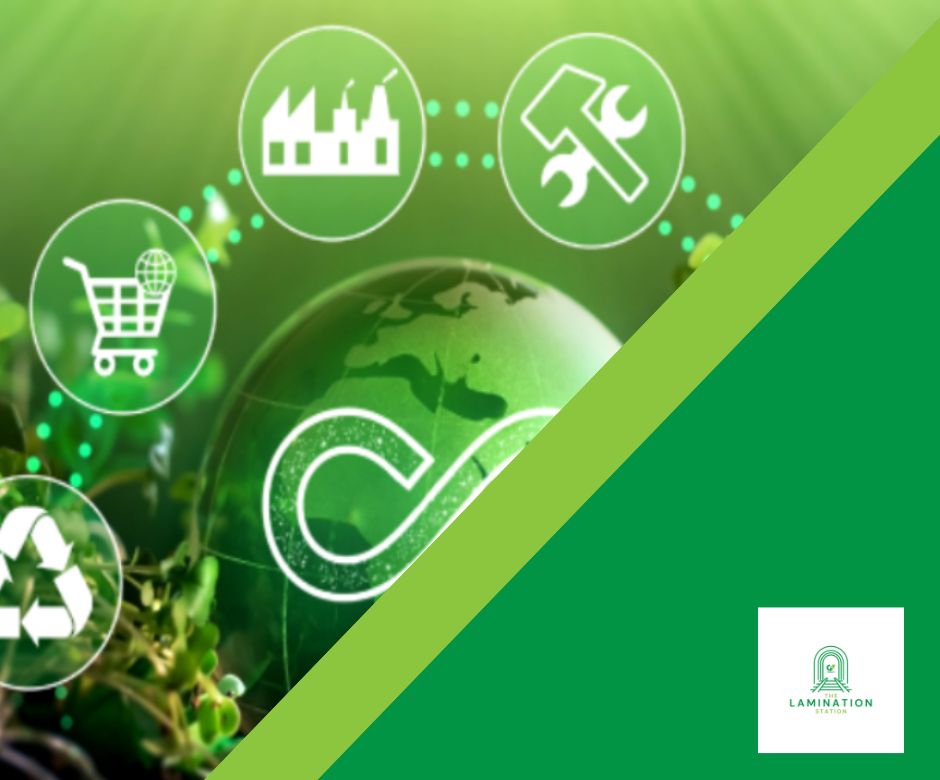Eco-Friendly Lamination for Schools: How Reusable Materials Can Reduce Waste
In today’s schools, sustainability is more than just a buzzword—it’s a priority. With the increasing emphasis on eco-friendly practices in education, schools are looking for ways to reduce waste, reuse materials, and minimise their environmental impact. One often-overlooked solution? Lamination.
While laminating classroom materials might not seem like an obvious way to “go green,” the truth is, laminating can play a crucial role in sustainability by extending the life of key resources. In this blog, we’ll explore how eco-friendly lamination practices can help schools cut down on waste, save money, and make a positive environmental impact.
1. Lamination Increases Reusability
One of the greatest benefits of laminating classroom materials is that it turns one-time-use items into reusable resources. Instead of constantly printing new handouts, worksheets, or posters that end up in the bin, laminating allows teachers to use the same materials over and over again, year after year.
For example, consider reusable flashcards for vocabulary lessons or laminated math worksheets that students can write on with dry-wipe markers. These laminated resources can be wiped clean and reused, significantly reducing the need for reprinting and, ultimately, cutting down on paper waste.
By investing in lamination film—especially small-core rolls designed for easy use with desktop laminators—schools can create a library of durable, reusable materials that last for years. This reduces the need to constantly replenish disposable supplies, making a big impact on sustainability efforts.
2. Durability Equals Less Waste
One of the major challenges schools face is the wear and tear of classroom materials. Unprotected posters, charts, and frequently handled worksheets often become tatters or damaged, resulting in more waste as they are thrown out and replaced.
Lamination helps protect these items, making them much more durable and resistant to damage from spills, rips, or frequent use. With longer-lasting materials, schools can reduce the number of items they need to discard, which translates into less waste being generated over time.
Think about classroom signs, schedules, or instructional charts that are often posted on walls. Laminating these items ensures they stay in good condition and can be reused every school year, minimising the need to purchase or print replacements.
3. Reduce Waste with Customised Lamination Roll Sizes
When it comes to lamination, one size doesn’t always fit all. Schools often find themselves wasting material when using oversized lamination film for smaller projects, like flashcards or labels. This excess film not only leads to unnecessary waste but also increases costs over time.
With customised lamination roll sizes, specifically small-core lamination rolls, schools can minimise material waste by using the exact amount of film needed for each project. Whether you’re laminating a small batch of worksheets or classroom signage, these compact rolls ensure you use only what’s necessary, reducing both material waste and disposal costs.
By offering lamination tailored for different project sizes, schools can enjoy the efficiency and environmental benefits of reducing plastic waste and conserving resources.
4. Save Energy with Desktop Laminators
Another eco-friendly benefit of using small-core lamination film is its compatibility with desktop laminators, which are far more energy-efficient than larger, industrial-sized machines. Schools that use desktop laminators save on energy consumption, as these machines heat up faster, use less power, and are generally more efficient for small to medium-scale lamination projects.
By opting for energy-efficient lamination tools and equipment, schools can not only reduce their energy usage but also contribute to a greener, more sustainable school environment.
5. Eco-Conscious Classroom Practices
Lamination can also help foster an eco-conscious mindset in students. By introducing the idea of laminating reusable classroom materials, teachers can demonstrate the importance of sustainability and resource conservation in everyday life.
Students can actively participate in reducing classroom waste by reusing laminated materials, learning the value of preserving resources, and understanding how small actions contribute to a larger environmental impact. Encouraging these sustainable habits in the classroom is a great way to promote a culture of environmental responsibility from an early age.
6. Choose Eco-Friendly Lamination Films
As schools strive to adopt greener practices, using eco-friendly lamination film is a great way to further reduce environmental impact. Several lamination films are now made with sustainable materials, such as biodegradable or recyclable plastics, which significantly reduce the amount of waste that ends up in landfills.
Eco-friendly lamination films not only provide the same level of protection and durability as traditional options, but they also align with schools’ sustainability goals. By choosing lamination films made from recycled or environmentally conscious materials, schools can lower their carbon footprint further whilst maintaining high-quality, long-lasting classroom resources.
Switching to eco-friendly lamination film shows that schools are committed to making small but impactful choices that benefit the environment, helping educators set an example for students in fostering a more sustainable future.
Laminating for a Greener Future
In conclusion, eco-friendly practices in schools can be simple yet highly effective, and lamination is a powerful tool in promoting sustainability. By laminating reusable materials, reducing waste through customised roll sizes, and choosing eco-friendly lamination films, schools can significantly cut down on their environmental impact while saving valuable resources.
Switching to small-core lamination rolls for desktop laminators and opting for sustainable film materials not only helps preserve classroom resources but also supports a greener, more efficient way of teaching. Schools can lead by example, teaching students the importance of sustainability while reaping the practical benefits of longer-lasting classroom materials.
Ready to make a difference in your school’s eco-friendly efforts? Explore our selection of small-core, eco-conscious lamination films designed to help schools laminate smarter and greener.

